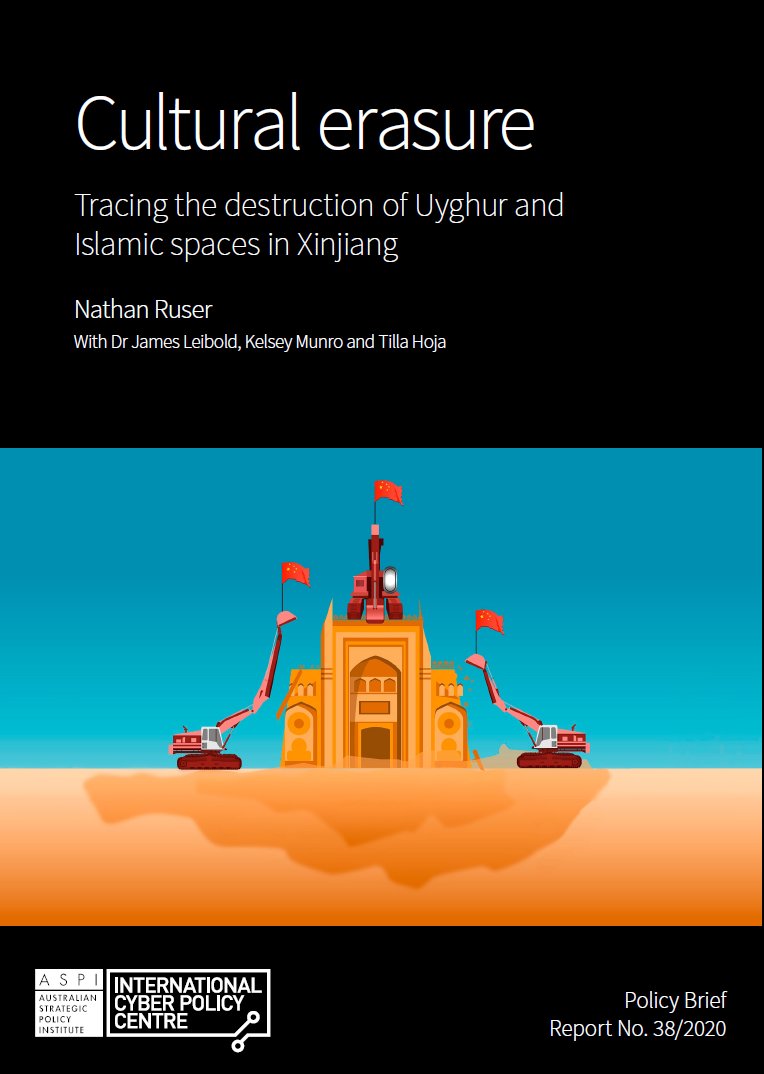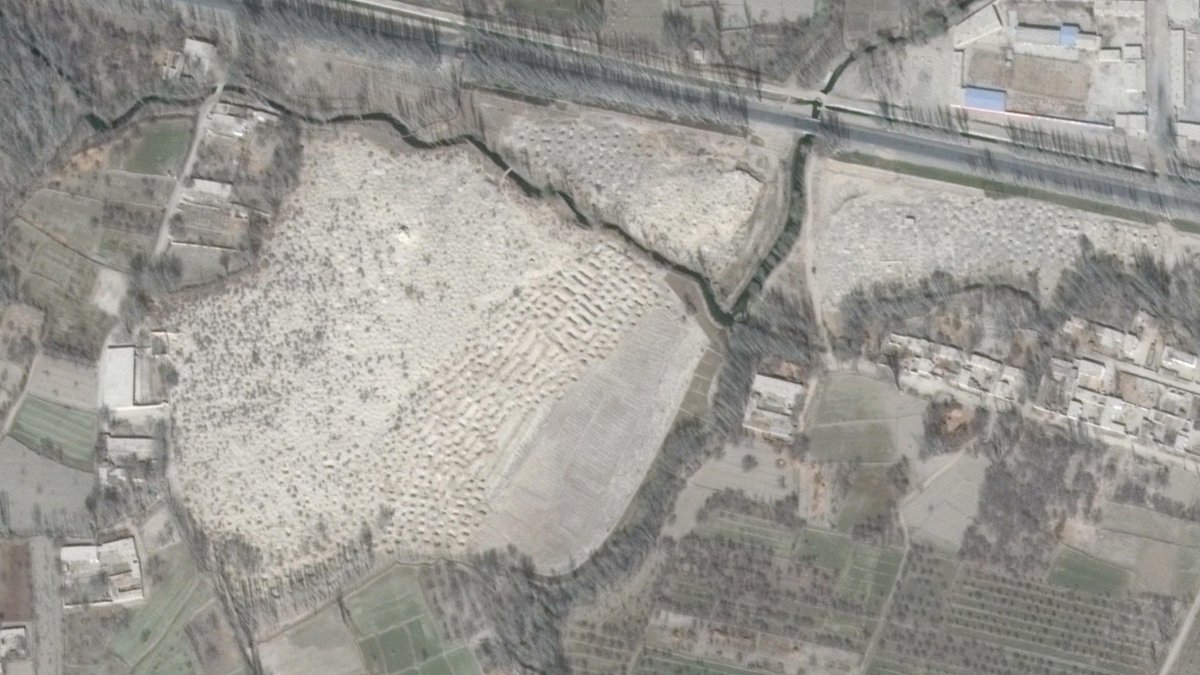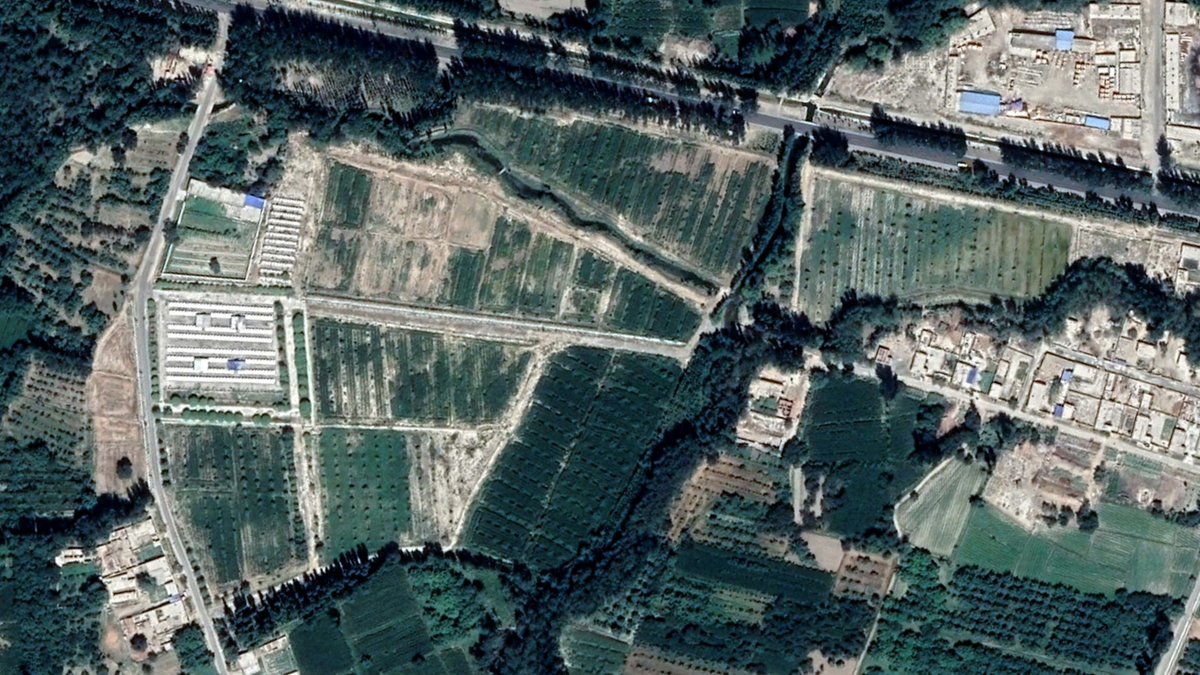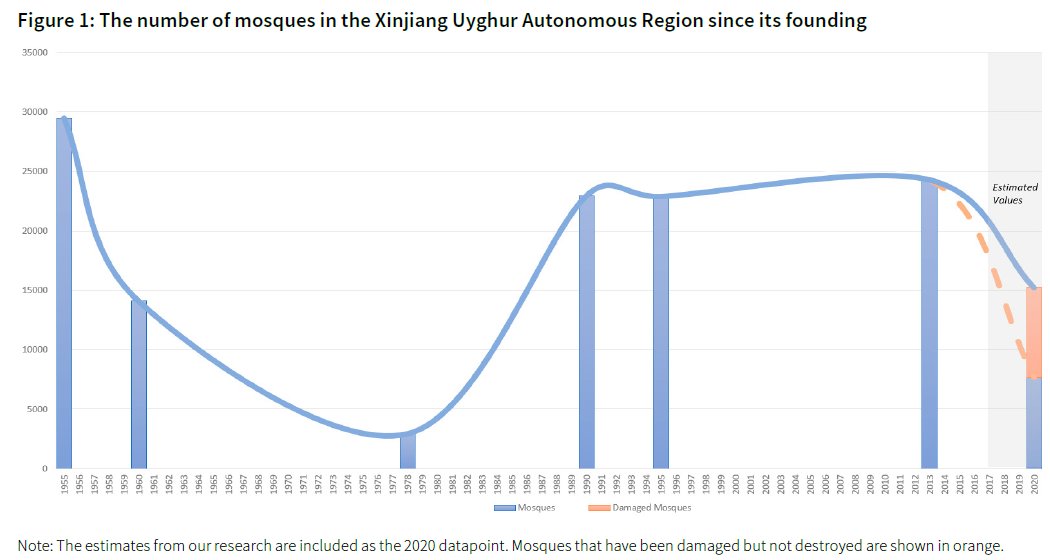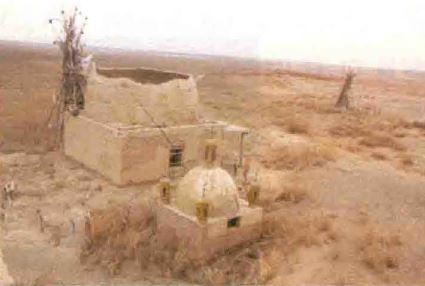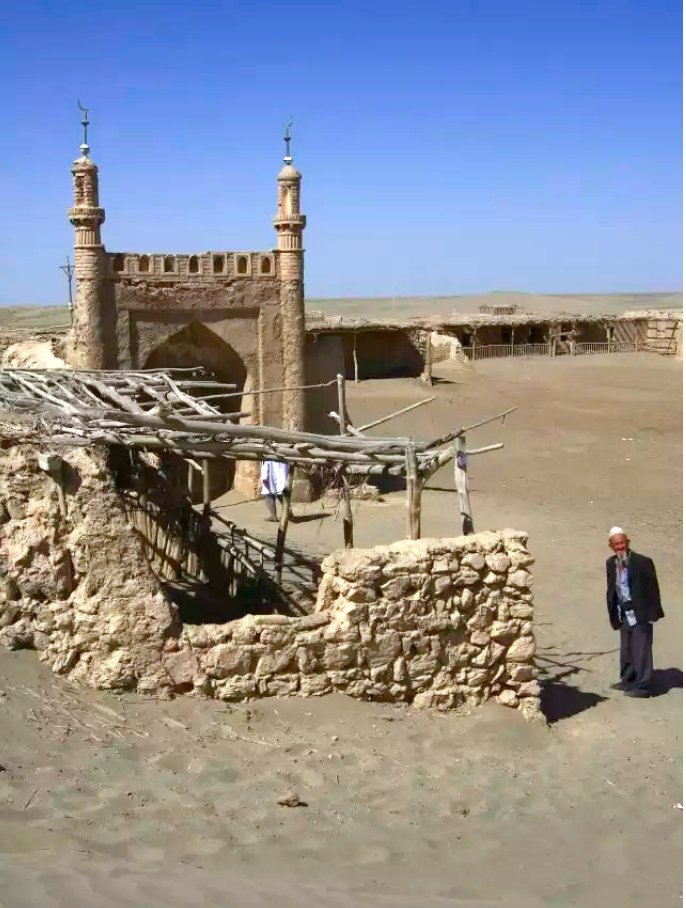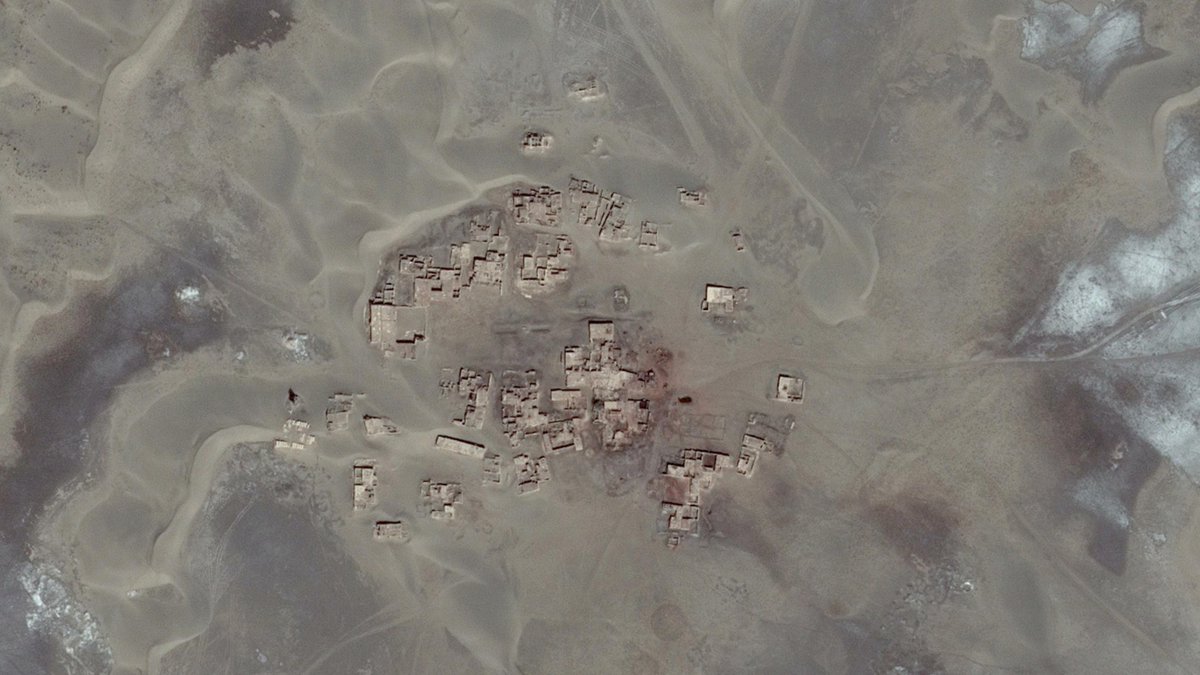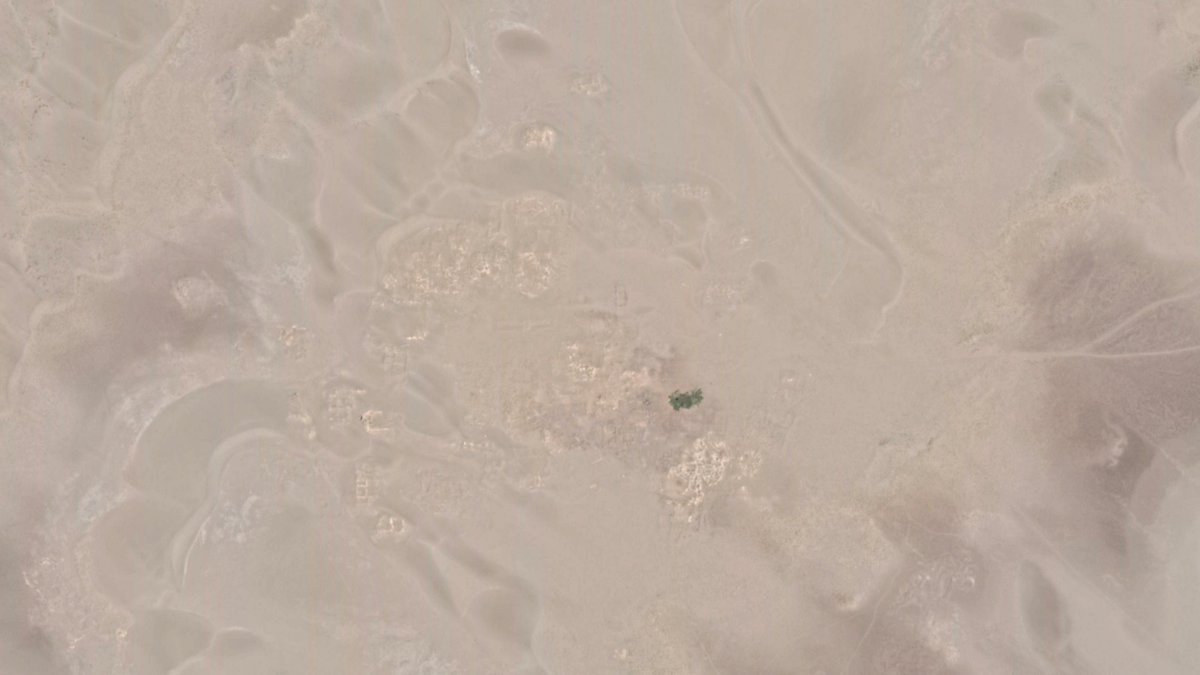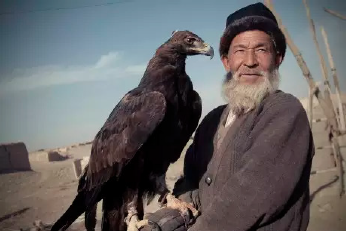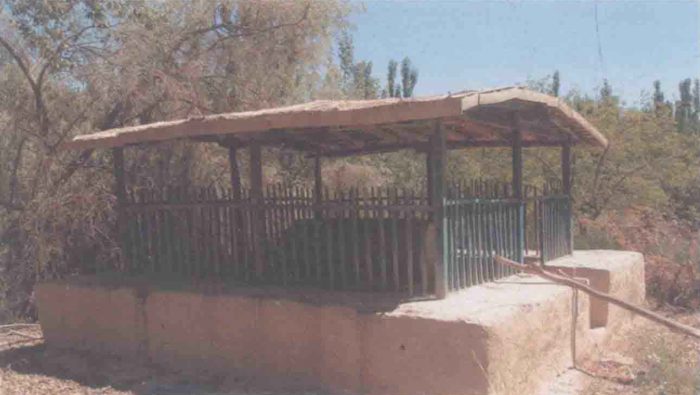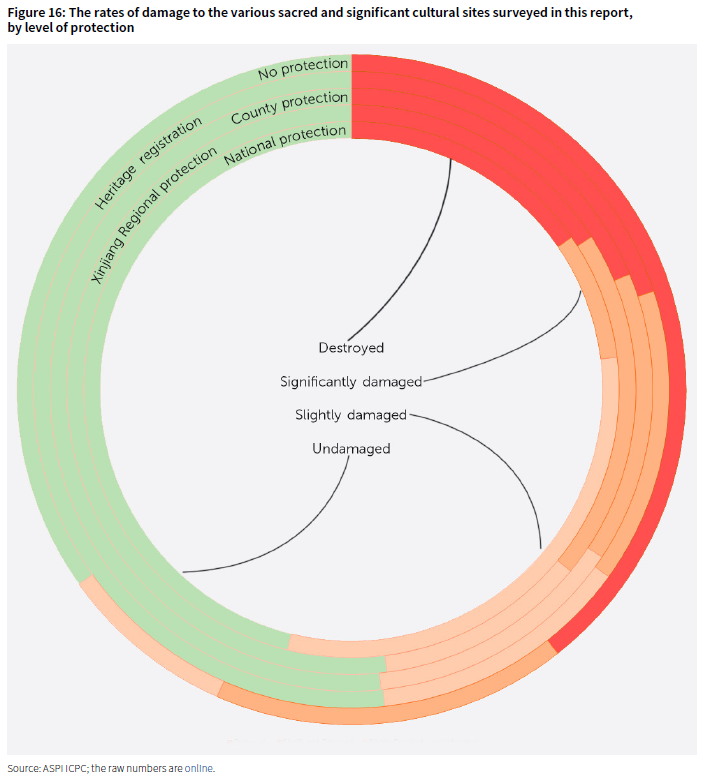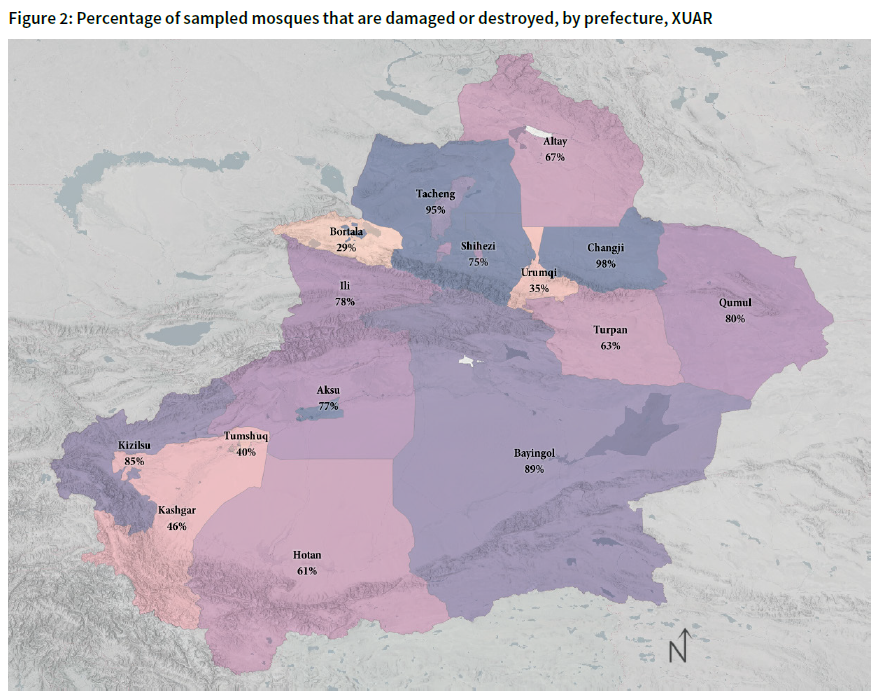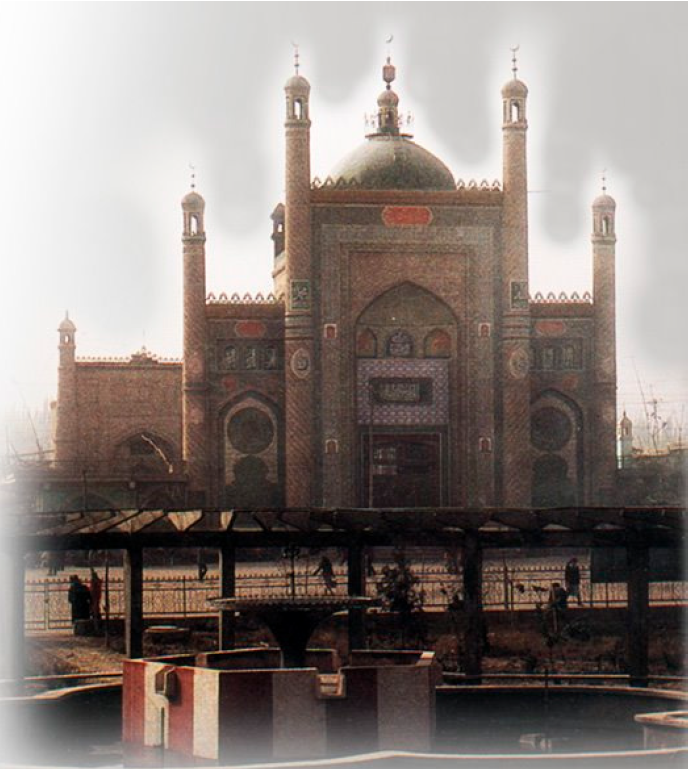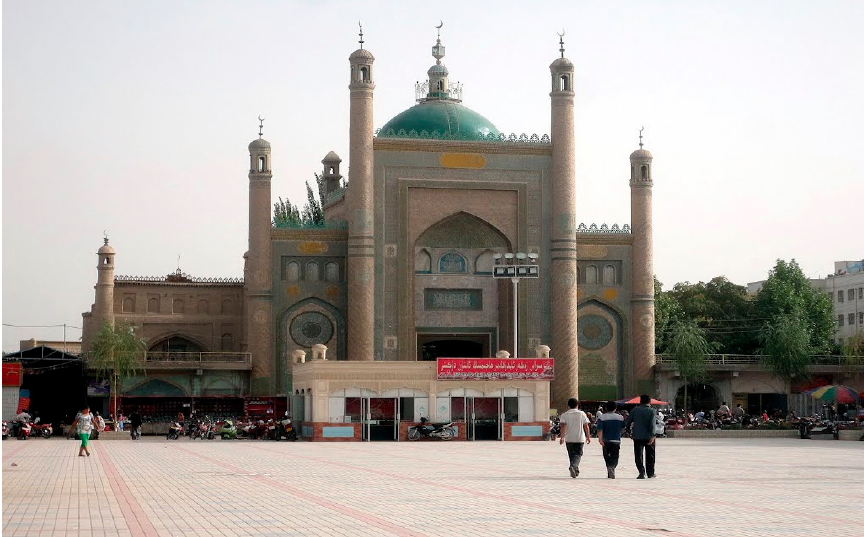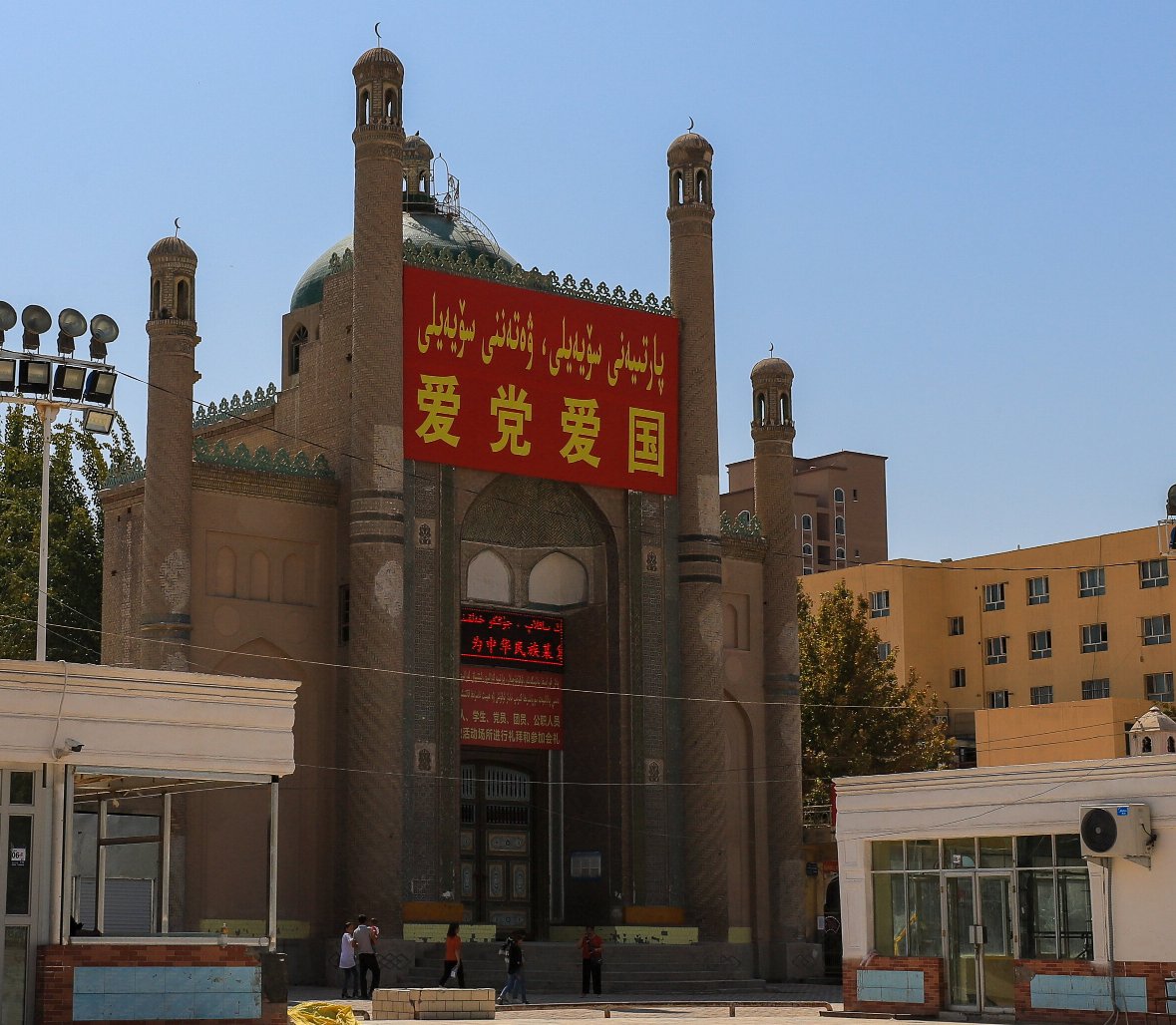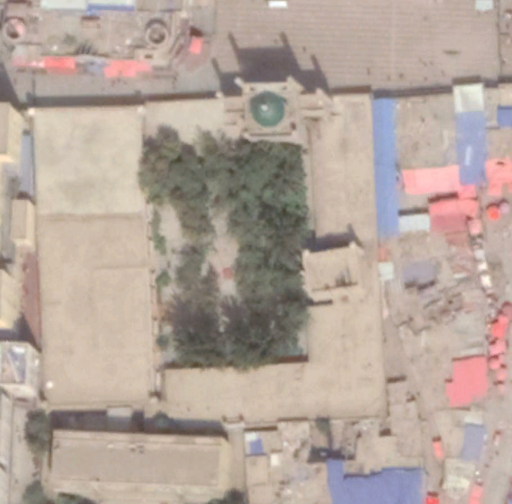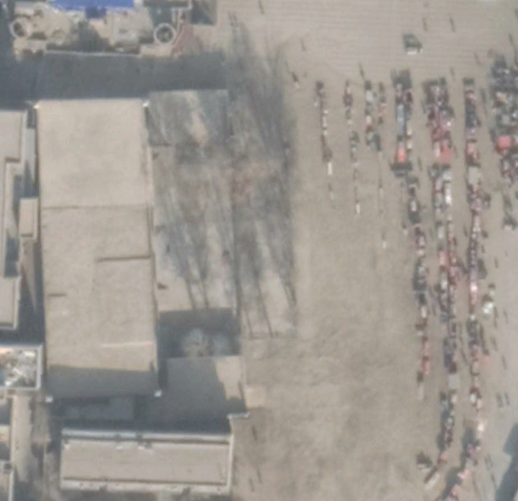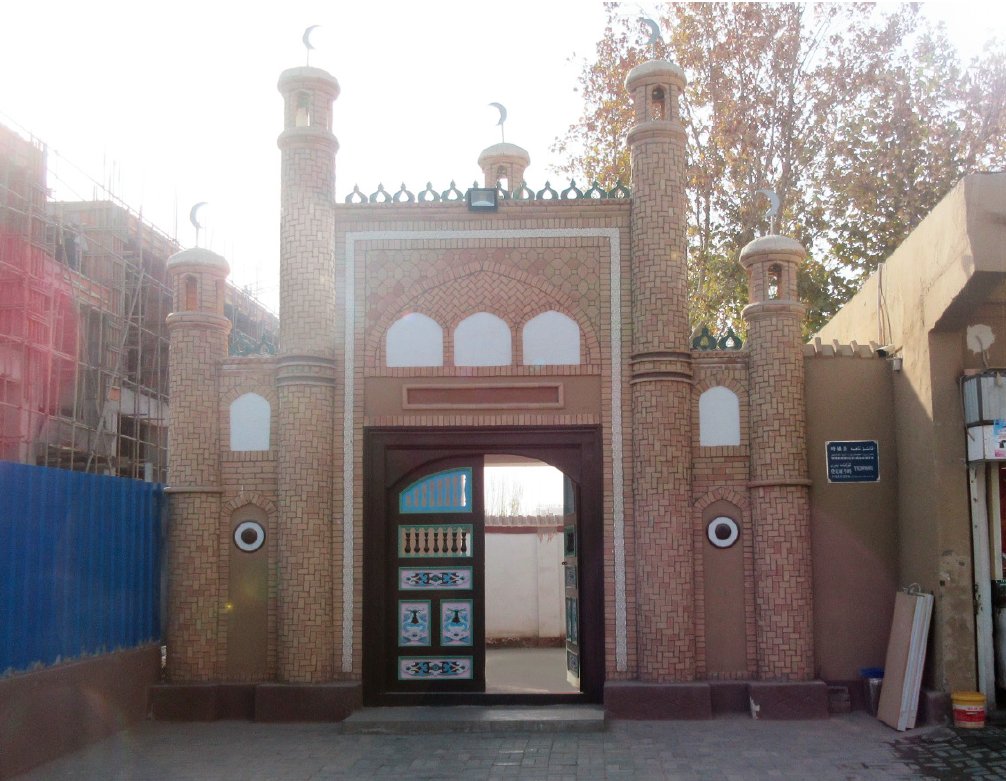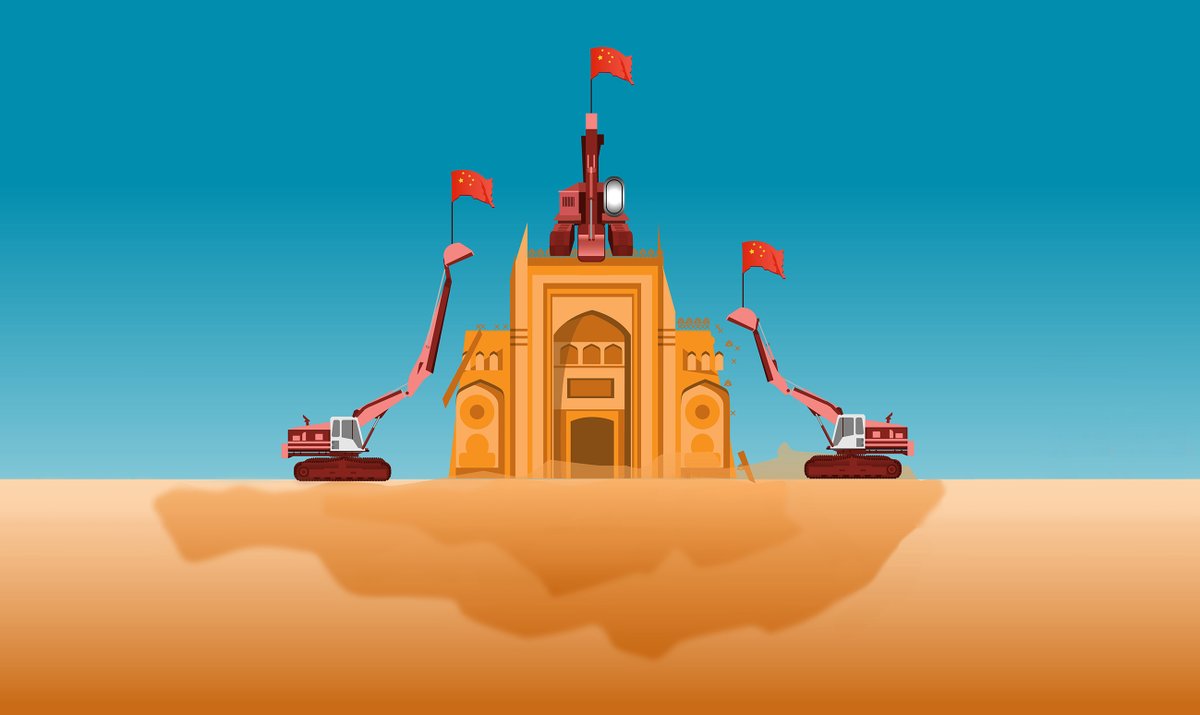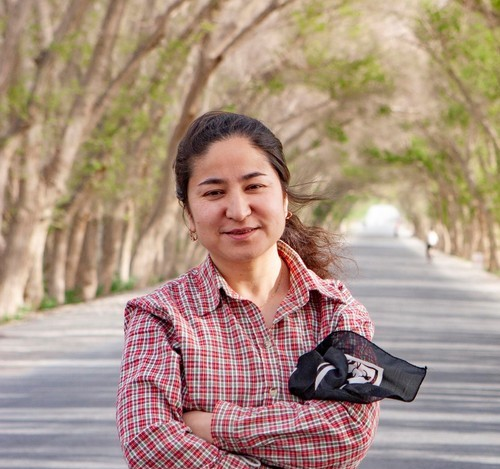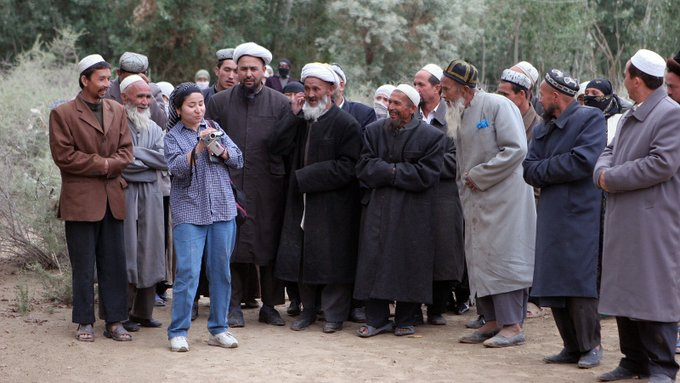THREAD. An estimated 16,000 mosques in Xinjiang (roughly 2 in 3) have been demolished or damaged. For the second part of our Xinjiang Data Project release we look at nearly 1,000 significant cultural sites in Xinjiang and find a staggering number gone.
https://www.aspi.org.au/report/cultural-erasure">https://www.aspi.org.au/report/cu...
https://www.aspi.org.au/report/cultural-erasure">https://www.aspi.org.au/report/cu...
In 2017 a widespread crackdown detained not only likely over a million Uyghurs, but started a concerted assult on their culture and identity, a cultural genocide eliminating worship and non-Han public space.
Check out this research, and far more, on the Xinjiang Data Project website, launched Yesterday. https://twitter.com/Nrg8000/status/1308950444388089857">https://twitter.com/Nrg8000/s...
The New York Times, with @ChuBailiang, @austinramzy and others, have launched a massive and impressive interactive investigation into our findings and their own reporting trips to Xinjiang. Please check it out here! https://www.nytimes.com/interactive/2020/09/25/world/asia/xinjiang-china-religious-site.html">https://www.nytimes.com/interacti...
A Uyghur academic we spoke to (who wishes to remain anonymous) told us that this campaign of cultural erasure is "a calculated effort to sever the emotional and blood ties to the past."
Meanwhile, in 2016 the Deputy Secretary of Aksu Prefecture told government bodies to & #39;waste no time in guiding the masses … to change their customs" and "abandon closed, backwards, conservative and ignorant customs", refering to Uyghur cemeteries. http://archive.vn/b0l3K ">https://archive.vn/b0l3K&quo...
In 2015 a party official and lecturer at an official CCP school asserted that & #39;the number of mosques in Xinjiang far exceeds the needs of normal religious activities,& #39; she explicityly recommended that mosques should be demolished. We estimate that 8,500 have been.
Right now there are far fewer mosques in Xinjiang than at any time since the Cultural Revolution, and we believe that the majority that remain are no longer open to worshippers (though we can& #39;t quantify this from space). See this thread from @GroseTimothy https://twitter.com/GroseTimothy/status/1301599473349558279">https://twitter.com/GroseTimo...
And these photos from @J_SmithFinley https://twitter.com/j_smithfinley/status/1303641762125221891">https://twitter.com/j_smithfi...
Other significant cultural sites, include shrines/mazars haven& #39;t faired much better, even among officially protected cultural sites, roughly 50% are damaged or destroyed, when we look at unprotected sites that rises to nearly 2/3.
One site, Ordam Mazar marks the site of the 10th century battle that resulted in Islam being spread across Southern Xinjiang. It& #39;s stood in place, in the desert at least 20km from the nearest town.
In December 2017, government authorities trekked bulldozers and other construction equipment the 20km through derelict desert tracks and razed the entire settlement, even though access had already been banned for decades.
Here& #39;s the caretaker, Qadir Shaykh, who was part of the only family allowed to remain in the settlement and had to report all visitors promptly to government authorities.
Of the 284 mazars (sacred shrines/gravesites) we located and assessed, 165 (58%) of them had been damaged or destroyed.
This campaign of cultural erasure is systematic throughout Xinjiang, it is hardly affected by official protection, and it stretches through essentially every part of Xinjiang.
One story we want to tell is of Kargilik’s Grand Mosque. An epic building, it was constructed in the middle 1500s and had stood every since, with beautiful Islamic mosaics and archiecture. As we can see in this undated photo from the late 20th century.
This was largely preserved (albeit slightly faded) under official government herritage protection until the crackdown in Xinjiang.
This photo from 2018, likely within a month of its demolition shows all the Arabic caligraphy removed, and hanging over where the shahada used to be is an announcment saying party members, students and government employees are forbidden to pray.
Within months it was being reconstructed except at 1/4th the size, with shoddy workmanship and overall none of the grandure that the gatehouse had for centuries. This photo from 2019 and shared with us shows how it looks now. The other 3/4 of where it used to stand will be a mall
This practice was not widespread across Xinjiang, but we did find a small handful of mosques where this bizzare miniturisation has taken place.
Kargilik’s Grand Mosque also features on the beautiful and provocative cover of our report, by an artist who wishes to stay anonymous, that shows its demolition stylized.
Xinjiang& #39;s government has assulted its people, its culture and all aspects of its public life. Piety is outlawed and public space for Uyghurs and other non-Han nationalities to express their herritage and their identity are being torn from under their feet and demolished.
The same month that Ordam Mazar was razed to rubble, after over a millennium marking the sacred ground it stood on, Rahile Dawut, a woman who devoted her life to the study and appreciation of these sacred public sites was disappeared.
Her family, living in exile has heard no news of her since December 2017. They don& #39;t know where she is, what she& #39;s been charged with, or even if she& #39;s still alive.
While all of this has been happening @UNESCO, the global body tasked with ensuring the preservation of cultural herritage, has been completely silent. Not a single statement has been issued by them. Scholar @Rachel_A_Harris has said this about these global bodies.
Another global body meant to preserve and protect herritage, @ICOMOS, has also been silent on the erasure of Uyghur culture (and that of other non-Han nationalities in Xinjiang) since 2009, as has @WorldMonuments who have worked with Chinese conservators for over a decade.
The Muslim world has stayed silent on the desecration of Islam happening in Xinjiang. Saudi Arabia and other Gulf countries often support China in its draconian and violation and desecration of Islam. They cannot expect moral leadership of the Muslim world while staying silent.
As always, the full data behind this report and these estimates is available online for anyone to look at. Our website is having a number of difficulties right now (curious timing...) but currently the data is still available here: https://xjdp.aspi.org.au/data/?tab=datasets">https://xjdp.aspi.org.au/data/...
The methodology for how we found these sites is detailed in the appendix of the report, for the mosques it involved POI databases and a stratified random visual search. For other sites we used POIs and official Chinese herritage books.
If you know of mosques or cultural sites in Xinjiang that we have not examined yet, my DMs are always open and we hope to grow this dataset as much as possible moving forward!
Another photo of Kargilik& #39;s miniaturized mosque was taken by @EmilyZFeng on a recent reporting trip to Xinjiang. https://twitter.com/EmilyZFeng/status/1309356724306890752">https://twitter.com/EmilyZFen...

 Read on Twitter
Read on Twitter